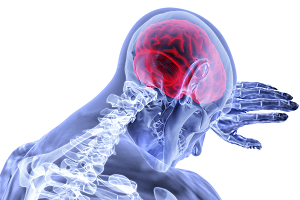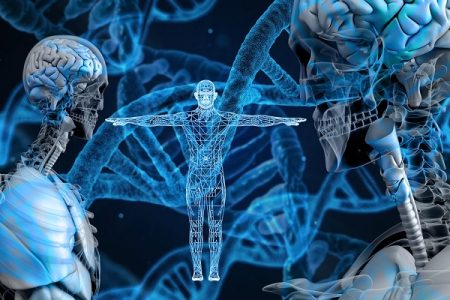Achondroplasia: Causes, Symptoms, Diagnosis, Treatment
- Updated on: Jul 10, 2024
- 4 min Read
- Published on Jan 23, 2019

Understanding the term ‘Achondroplasia’: What is achondroplasia?
The term ‘achondroplasia’ literally means “without cartilage formation.” Achondroplasia is a bone growth abnormality or skeletal dysplasia, which occurs in about 1 in 20,000-30,000 people. Achondroplasia is known as ‘disproportionate dwarfism’ because people suffering with achondroplasia develop short stature (which means a normal sized torso and short limbs).
Achondroplasia is an autosomal dominant disease which equally affects men and women. It is observed that more than 70 percent of achondroplasia cases result from a sudden mutation in families where the parents are of average height and do not suffer from any genetic abnormality. Average height calculated of adult males suffering from achondroplasia is about 50-55 inches i.e. about 4 feet, 4 inches) and that of adult females suffering from achondroplasia is less than 50 inches i.e. or is about 4 feet.
Genetics behind Achondroplasia: Causes of Achondroplasia
We know that more of the skeleton is made up of cartilage and most cartilage eventually converts to bone. When the cartilage is not converted into bone due to mutations in the FGFR3 gene, it leads to anchondroplasia.
Achondroplasia is a result of gain-of-function mutation in the fibroblast growth factor receptor 3 (FGFR3) genes on chromosome. Two specific mutations in the FGFR3 gene result in more than 99 percent of cases of achondroplasia. These mutations affect the cartilaginous growth plate in the growing skeleton which leads to a variety of complications.
Mutations occur at the same nucleotide in the FGFR3 gene, and result in a glycine-to-arginine substitution in amino acid 380 in the transmembrane domain of the FGFR3 gene. FGFR3 gene initiates the production of the fibroblast growth factor receptor 3 (FGFR3) proteins which are necessary for bone growth and maintenance. During mutations in the FGFR3 gene, the amino acid glycine is replaced with the amino acid arginine. Due to this, the FGFR3 receptor is permanently activated or becomes over-active, inhibiting chondrocyte proliferation which results in impaired endochondral ossification, growth restriction or shortening of bone, and other skeletal anomalies.
Inheriting achondroplasia: Is it possible?
Achondroplasia is known to be inherited in an autosomal dominant manner but according to the National Human Genome Research Institute (NHGRI), in more than 70 percent of the cases, achondroplasia is not inherited. Achondroplasia is a dominant genetic disease, therefore only a single gene of the FGFR3 gene needs to be mutated for the development of its symptoms.
Only about 20 percent of achondroplasia cases are inherited. If both parents have achondroplasia, then the child has 25 percent chances of acquiring a normal stature, 25 percent risk of having homozygous achondroplasia (inheriting two defective genes which is a lethal condition) and 50 percent chances of having one defective gene that causes achondroplasia.
If a single parent is suffering from achondroplasia, the child has a 50 percent chance of acquiring it. It is also observed that infants born with homozygous achondroplasia might die within a few months of being born.
Some common symptoms of achondroplasia
The symptoms of achondroplasia generally affect the physical health of a child. Some of the signs and symptoms of achondroplasia are listed below:
- Shortened limbs (dwarfism) i.e. shortened legs and arms, with the upper arms and thighs more shortened than the forearms and lower legs. This can be termed as “rhizomelia”.
- Dwarfism: Short stature and slow growth, which is significantly below the average for age and sex.
- Small vertebral canals (back bones) which leads to paralysis and breathing difficulties.
- Crowded teeth or misaligned or crooked teeth
- Bowed lower legs or flat feet (short and broad) or short fingers
- Abnormal development of the head may result in hearing loss and ear infections.
- Loose joints
- Flattened bridge of nose
- Infants may suffer from hydrocephalus, or “water on the brain”, spinal stenosis, decreased muscle tone, etc.
Other common symptoms of achondroplasia in both adults and children can be such as obesity, obstructive sleep apnea, difficulty in bending their elbows, abnormal curved spine, extra gap between the middle and ring fingers, etc.
Diagnosis of achondroplasia
It is easy to diagnose achondroplasia during pregnancy with the help of a fetal ultrasound. If the parents are already affected, pre-natal screening is recommended for the diagnosis in the baby. During the ultrasound, some common signs such hydrocephalus, or an abnormally large head or slow growth, might add to the suspicion. Therefore, genetic testing is done to verify the presence.
After the birth, medical history of the child and the parents and physical assessment (of the child) helps in the diagnosis of achondroplasia in the child. During a physical examination or after an X-ray, disproportionate short stature, joint laxity, lumbar lordosis, shorter infant bones and some other symptoms may be studied to help the doctor identify achondroplasia. Blood tests are done to test the variation in the FGFR3 gene to confirm the diagnosis.
Treatment of Achondroplasia
Achondroplasia is a rare genetic disorder which cannot be prevented and also has no cure. In most cases, achondroplasia arises from unexpected new mutations and only genetic testing confirms the diagnosis.
Growth hormones are given as a treatment to achieve mild or average growth, but in many cases growth hormones do not have a significant impact in an affected child’s development. In severe cases, surgery is recommended to lengthen the legs by about 25 cm. Surgery may also help to prevent spinal compression or to straighten bowed legs. In various cases, Kyphosis or “hunch-back” is also corrected through surgery when a child starts walking.
Lumbar laminectomy is also recommended in cases of spinal stenosis, especially in young adults. Also, it is observed that if lack of proportion between the brain and the base of the skull leads to hydrocephalus (“water on the brain”), a shunt needs to be placed to drain the excess fluid. If obstructive sleep apnea occurs, it can be treated with weight reduction or surgically by the removal of tonsils and adenoids (adenotonsillectomy), or tracheostomy. Ear infections which lead to hearing loss can often occur in achondroplasia patients and can be treated through antibiotics.
Investigational treatments involve alteration of pathways that modulate the downstream propagation of FGFR3 signals, chemical inhibition of receptor signaling, antibody blockade of receptor activation, etc. Researchers believe that targeted therapeutics in the form of tyrosine kinase inhibitors is a promising strategy to treat FGFR3-related skeletal dysplasias.










